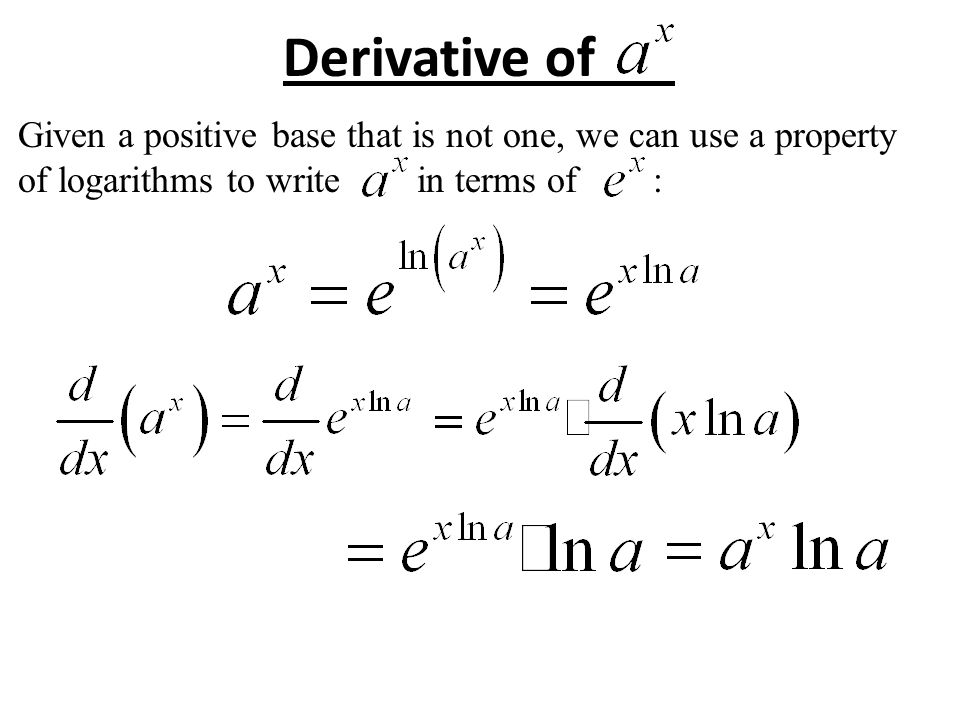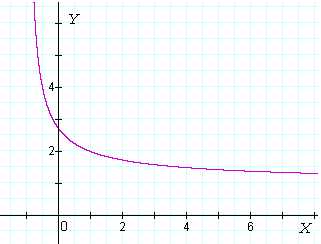
In other words: Because of this special property, the. From this definition, we derive differentiation formulas, define the number e, and expand these concepts to logarithms and exponential functions of any base. The exponential function, written exp(x) or ex, is the function whose derivative is equal to its equation. This definition forms the foundation for the section.

The logarithm with base e is known as the natural logarithm function and is. The derivative of y lnxcan be obtained from derivative of the inverse function x ey: Note that the derivative x. Recall that the function log a xis the inverse function of ax: thus log a x y,ay x: If a e the notation lnxis short for log e x and the function lnxis called the natural loga-rithm. We begin the section by defining the natural logarithm in terms of an integral. The Natural Logarithm Function Recall the denition of a logarithm function: log b x is the power which b must be raised to in order to obtain x. Logarithmic function and their derivatives. By the end of the section, we will have studied these concepts in a mathematically rigorous way (and we will see they are consistent with the concepts we learned earlier). Prove properties of logarithms and exponential functions using integrals. Recognize the derivative and integral of the exponential function. Define the number latexe/latex through an integral. Integrate functions involving the natural logarithmic function. Chapter 2: Differentiation Section 2.6: Derivatives of the Exponential and Logarithmic Functions Essentials Introduction In Section 1.1 the transcendental. We now have the tools to deal with these concepts in a more mathematically rigorous way, and we do so in this section.įor purposes of this section, assume we have not yet defined the natural logarithm, the number e, or any of the integration and differentiation formulas associated with these functions. Recognize the derivative of the natural logarithm.

Overview Derivatives of logs: The derivative of the natural log is: (lnx)0 1 x and the derivative of the log base bis: (log b x) 0 1 lnb 1 x Log Laws: Though you probably learned these in high school, you may have forgotten them because you didn’t use them very much. The definition of the number e is another area where the previous development was somewhat incomplete. 3.6 Derivatives of Logarithmic Functions Math 1271, TA: Amy DeCelles 1.
#Derivative of log and exponential functions how to#
For example, we did not study how to treat exponential functions with exponents that are irrational. However, we glossed over some key details in the previous discussions. Sometimes logarithms can make taking a derivative easier because we can use their super powers to break functions apart. We already examined exponential functions and logarithms in earlier chapters.



 0 kommentar(er)
0 kommentar(er)
